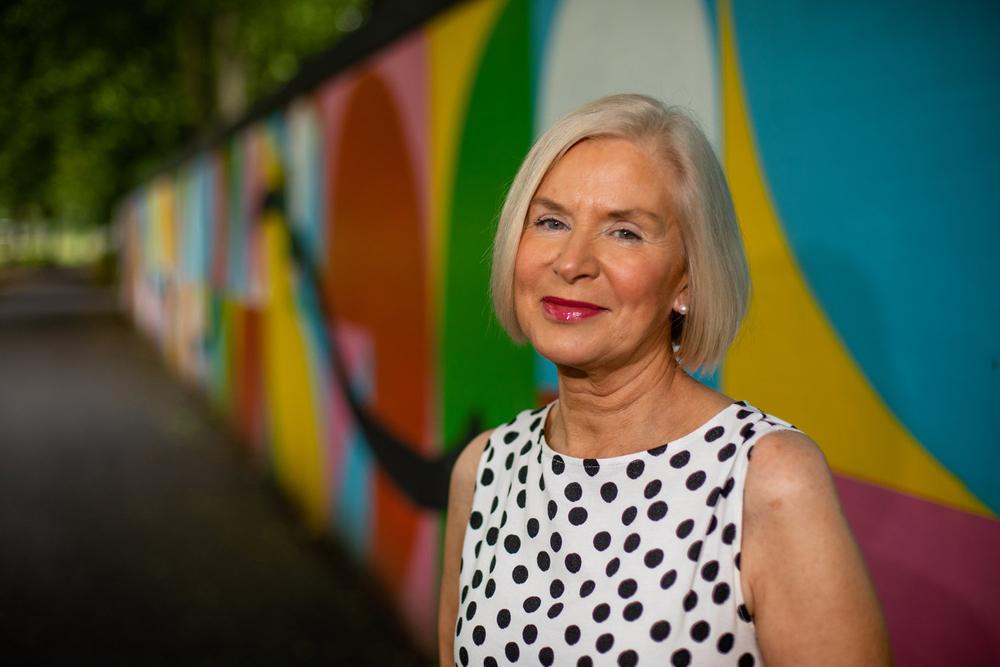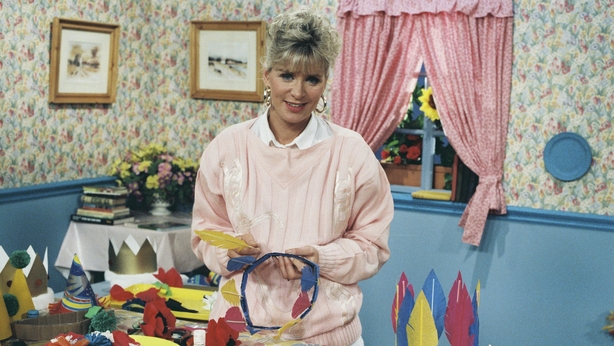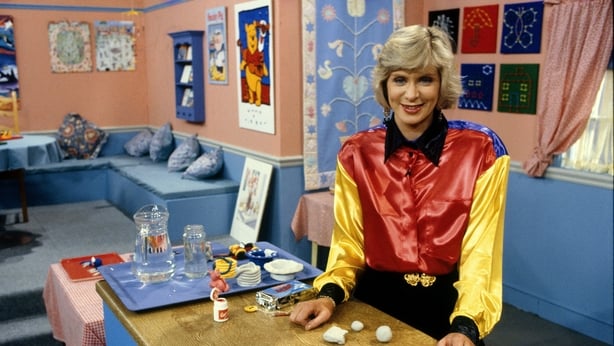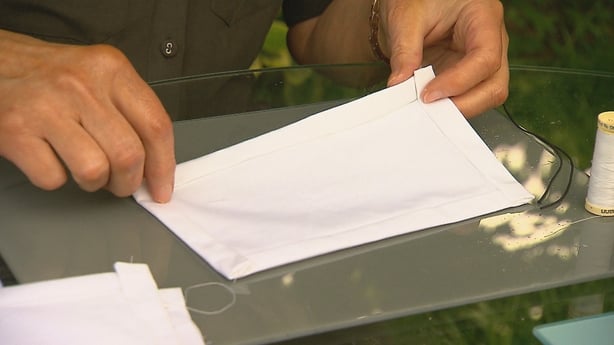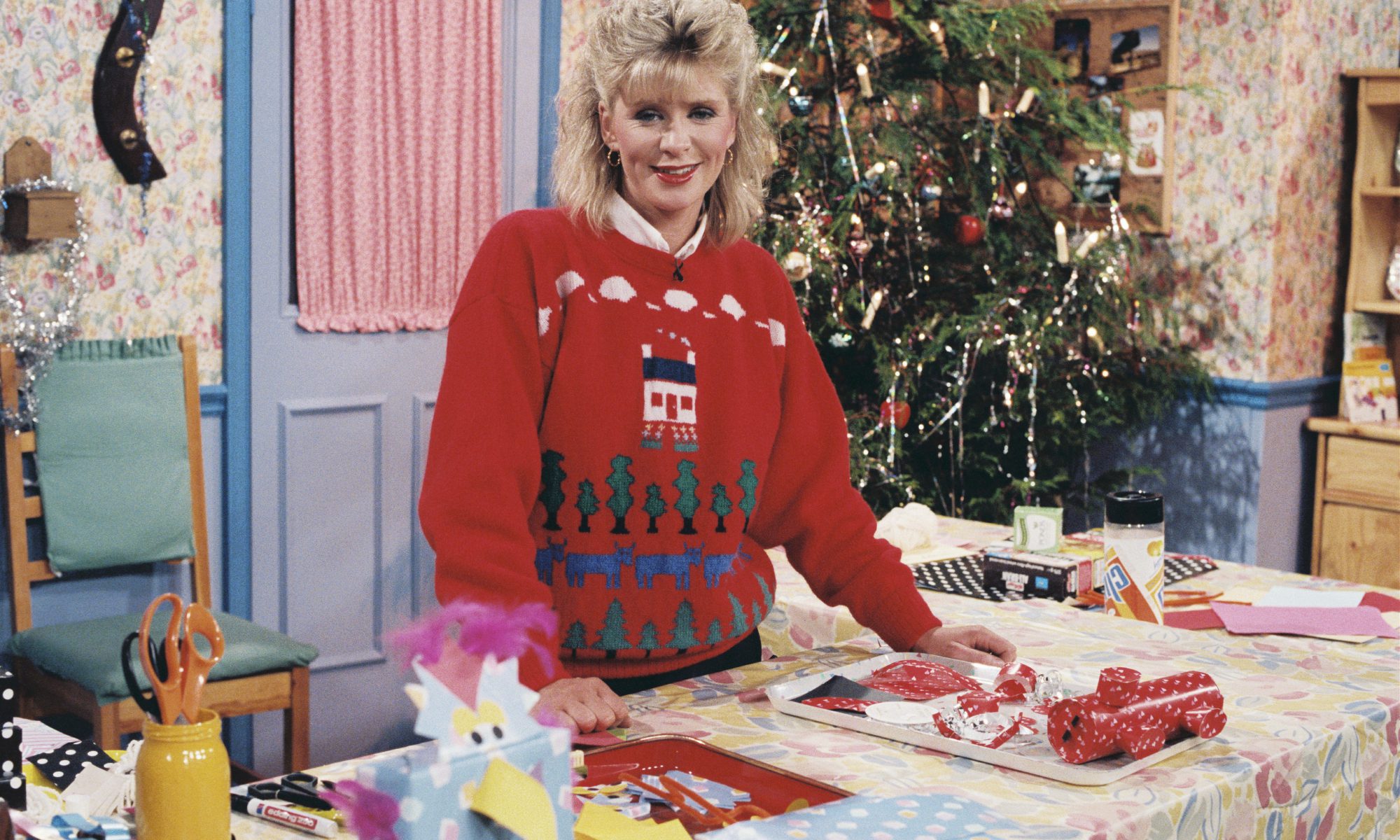Arts and crafts with the woman who taught us when we were kids: Mary Fitzgerald
Mary’s make and do show ‘How Do You Do’ has been making a welcome comeback on the RTÉ Player

Mary Fitzgerald: Her much-loved arts and crafts programmes can now be seen on the RTE Player. Picture: Moya Nolan
SATURDAY, SEPTEMBER 26, 2020 – 09:30 AM
AMANDA CASSIDY
Who remembers turning the house upside-down to find the list of glue and glitter, pipe-cleaners and googly eyes Mary Fitzgerald told us we’d need for that day’s creation?
Inevitably, in our house anyway, we’d give up the hunt and watch her cut, stick and paint, mesmerized by the seemingly magical creations she’d come up with in those precious 15 minutes between arriving home from school and starting the homework.
An entire generation was raised on painted bottles, dolls-house furniture and paper aliens on her show How Do You Do which featured on RTÉ each weekday in the late 80s and early 90s.
Now, thanks to a social media campaign to get the iconic arts and crafts show back onto our screens during Covid, Mary Fitzgerald’s one-woman make and do show has been making a comeback via the RTÉ player, entertaining the children of those children she captivated for years. So just why is the 30-year-old show so popular, and to what does Mary attribute her creativity?
“When I was a child, I loved making things. My mum would buy me make and do books from Woolworths in Kilkenny where I’m from, and I’d make doll houses, puppets, birthday cards, anything really. Later, I trained as a primary school teacher and went on to teach profoundly deaf children at St Mary’s School for Deaf Girls in Cabra. It was around this time that I spotted an ad in the paper from RTÉ looking for researchers for education programmes, so I applied.
“My CV sat in a pile for two years,” she remembers. “Then, out of the blue, I got a letter about a new Saturday morning show called Anything Goes. I remember I was teaching the children at my school about a creepy-crawly caterpillar that turns into a butterfly and I’d made up a song, I still remember it. So off I went in my massive paper caterpillar with a hat on my head and sang the song for them. It is the first and last time I ever sang in public.”
The show, a huge hit with the Irish public, went on to run for six years, with the first hour dedicated to the under 10s. “Many of the stories and adventures I made up were actually based on Trudy Mary, my brother’s imaginary friend,” laughs Mary. “I just loved it. When RTÉ asked me if I wanted my own show I didn’t hesitate. Essentially I was doing as an adult exactly what I loved doing as a child.”
And so the show, How Do You Do (which became fondly known as Mary’s Make and Do) took flight. It aired for 15-20 minutes during The Den and was among the highest-rated shows for the station. (It was only narrowly beaten to the top spot by The Simpsons, explains Mary proudly.)
“Initially, I came up with all the ideas. I’d go out and get the cornflake boxes, buy the arts material and do the crafts at home myself, starting with each step, a quarter made, half made, until it was complete…here’s one I made earlier! But eventually, I got a small store room to keep things in and my team slowly grew.”
Before long, Mary became a household name and subsequently, one of Ireland’s most recognised celebrities.
“We didn’t have email or social media back then, so the only indication that the show was successful were the sack-loads of entries to competitions that would arrive into Montrose.
“Once we ran a paint-a-witch competition for Halloween and there were so many entries that we decided to stick them up on every corridor in RTÉ. I mean, there wasn’t a space on the wall in that place that wasn’t filled with some scary-looking witch. Another time, we had done a bright clown costume segment, and I got a letter from one school in Cork with a picture of the entire school and teachers standing in the yard, every single one of them wearing the clown costume they’d watched me make the previous week!
Later, the instruction leaflets that the show released also proved a huge hit, and Mary went on to put together a How do You Do book for kids — an instant bestseller.
it doesn’t matter if it isn’t perfect or if you don’t follow the instructions perfectly, it is about having a go, trying things out, seeing where that takes you.
So what exactly made the show so special?
“The thing was that it wasn’t too long,” explains Mary modestly. “The kids would come in and throw their schoolbags into the hall and unwind before homework. There were also only RTÉ One and Two for the most part, so a lot of the Irish population had little else to watch. We also varied the crafts widely; we made dolls furniture, kites, tie-dye t-shirts. In fact, my daughter had no real interest in my work at the time, but only recently phoned me up to ask me about making tie-dye t-shirts during Covid restrictions!
It is amazing the satisfaction children get from making something out of nothing. Art can help them develop their creative skills. A lot gets handed to children on a plate these days and they don’t have to use their imaginations as much. But, at the end of the day, it doesn’t matter if it isn’t perfect or if you don’t follow the instructions perfectly, it is about having a go, trying things out, seeing where that takes you.”
Life has taken Mary on few interesting twists of her own. After seven years on the show, she went on to work as the PR for Irish Horse Racing Ireland. Admittedly, a jump from making paper-mache lanterns.
“My family was into racing,” Mary points out. “It was an extension of that hobby really. Then I took a side road and trained to be a barrister in my 50s and practiced for a few years.”
Today, she has her own business, Mary Fitzgerald PR where she mainly looks after corporate and consumer clients.
Mary believes that the inclination we all had to create during lockdown was what prompted one of her former fans to petition RTÉ to rerun her shows on the Player.
“When lockdown came, a guy in Limerick, a lecturer I believe, had watched my show as child. He started a twitter campaign to bring back the shows to help keep kids busy during lockdown. That’s why the tapes were taken out of the archives. We finally have new technology to put them out on the airwaves again. They are going to put more out for Halloween and Christmas but unfortunately a lot of the tapes were wiped, which is a terrible thing when you think about it. Programmes then were recorded on film, which was very expensive. But of the ones that have been aired, I’ve had a very good reaction.
“I mean, if you look at Mary Berry, she had her cooking programmes years ago and has now made a brilliant comeback. I’d love to go back and do something creative again, but the only way to find out would be to do maybe 8-10 programmes and put them out and see what people thought.”
So if RTÉ called you up and asked you to come back, would you really?
“In principle, I would, yes. I enjoyed it so much. I’d obviously look for more help, but I loved it. If they thought there was the appetite out there, and it was good to get children’s heads out of their phones for 15 minutes a day, then of course, I’d be happy to do it!”
Read More
5 things kids of today might not know about The Den

Devils’ Halloween Outfit
What you need:
Garden stick, stapler, belt, glue, thin cardboard, thick elastic, sticky tape, tin foil, rope or thick string, red card.
- Step One: For the devil’s ears, place a dinner plate on red card. Draw around it to make a circle and cut it out.
- Step Two: Cut the circle in half. Fold each half into a cone and fasten with a stapler or sticky tape. Make a small hole at either side of each cone with a scissors. Thread a piece of elastic to fit around your head, through the holes and tie.
- Step Three: For the tail, fold one end of the rope into a small loop and fasten with sticky tape. Draw an arrowhead on red card, cut out and stick to the other end of the rope. To wear the tail, put a belt through the loop and fasten around your waist.
- Step Four: Now draw a three-pronged fork on cardboard and cut it out. Use sticky tape to attach it to the garden stick.
- Step Five: Tear strips of tin foil and wrap around the stick and fork until completely covered.
- Wear red or black clothes when dressing up as a devil.
Painted bottles
What you need:
Empty bottles and jars, e.g. jam jars, wine bottles, sauce jars, poster paint and soap or powder paint, gloss paint, paintbrushes, glue, scissors, glitter, newspaper
- Step One: Clean and wash empty bottles. Paint them all over on the outside using poster or powder paint mixed with soap or gloss paint. You can also paint the bottles on the inside by swirling paint inside the bottle using household gloss paint. Leave bottles to dry. Do not decorate until completely dry.
- Step Two: You can leave the bottles plain or paint a funny face on it. Why not decorate the top of the jar with a bow or add other symbols like flowers.
- Step Three: With an empty sauce bottle, paint it all over and let it dry. Paint a strawberry on it or tie a ribbon and bow. Maybe write a message or paint someone’s name on it and gift it to them with a flower stuck inside.
- Step Four: You can also dab on blobs here and there with a brush, or add squiggles. To add glitter to a bottle, sprinkle a little on newspaper, cover the painted bottle with glue and roll it on the glitter in the newspaper. Shake off excess glitter and leave to dry.
All these bottles can be used for holding pens and pencils or flowers.



